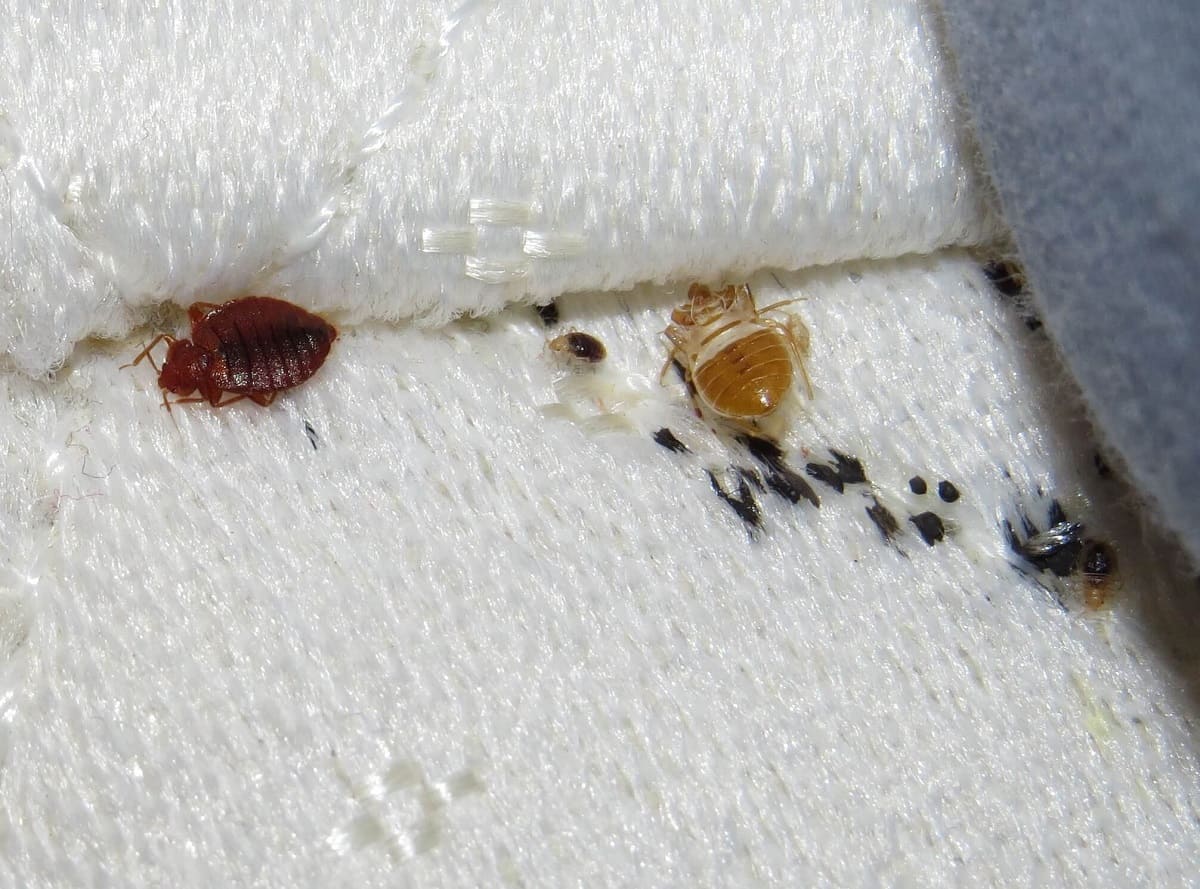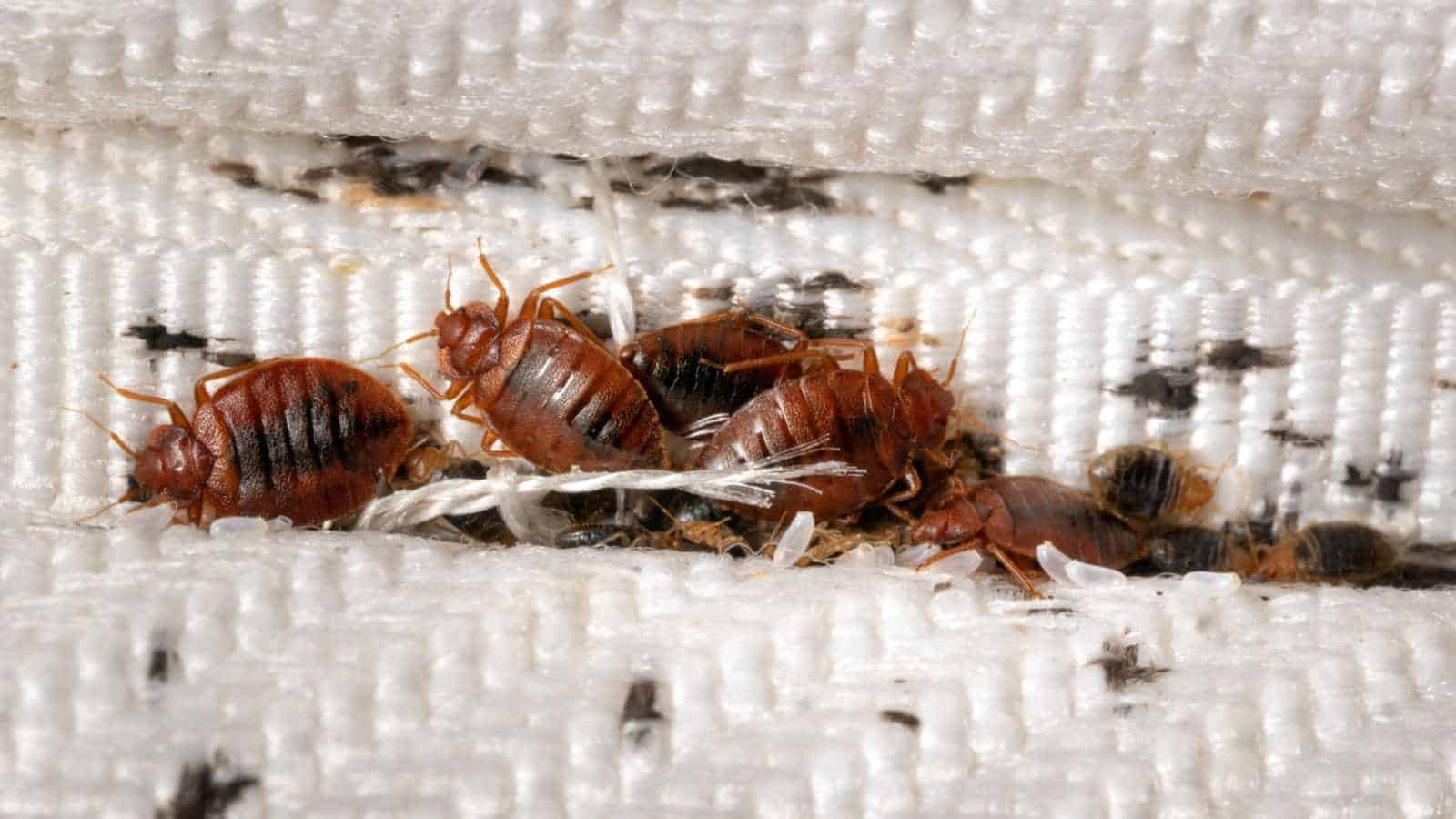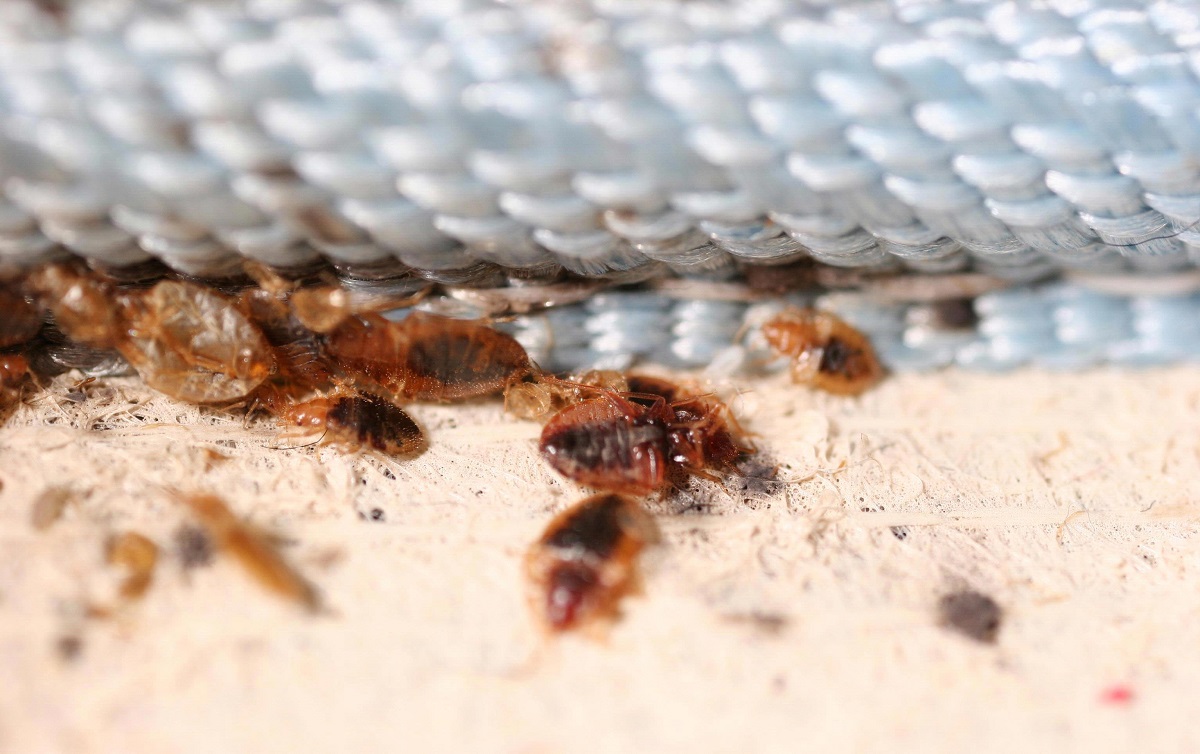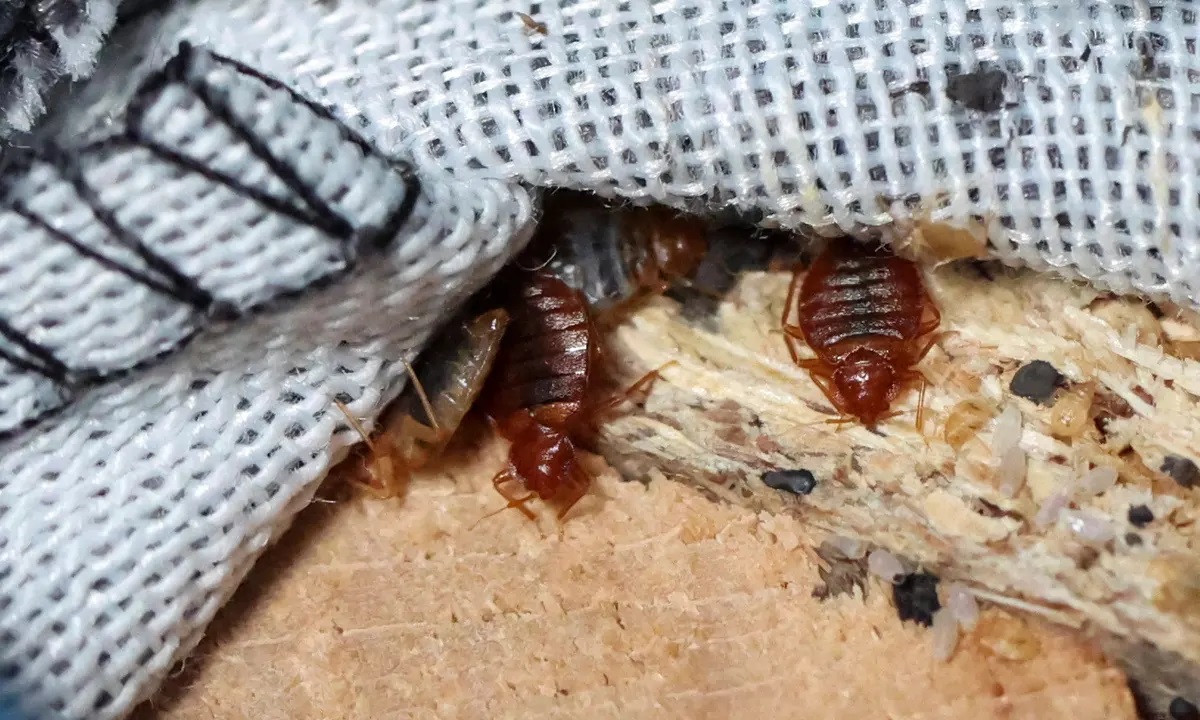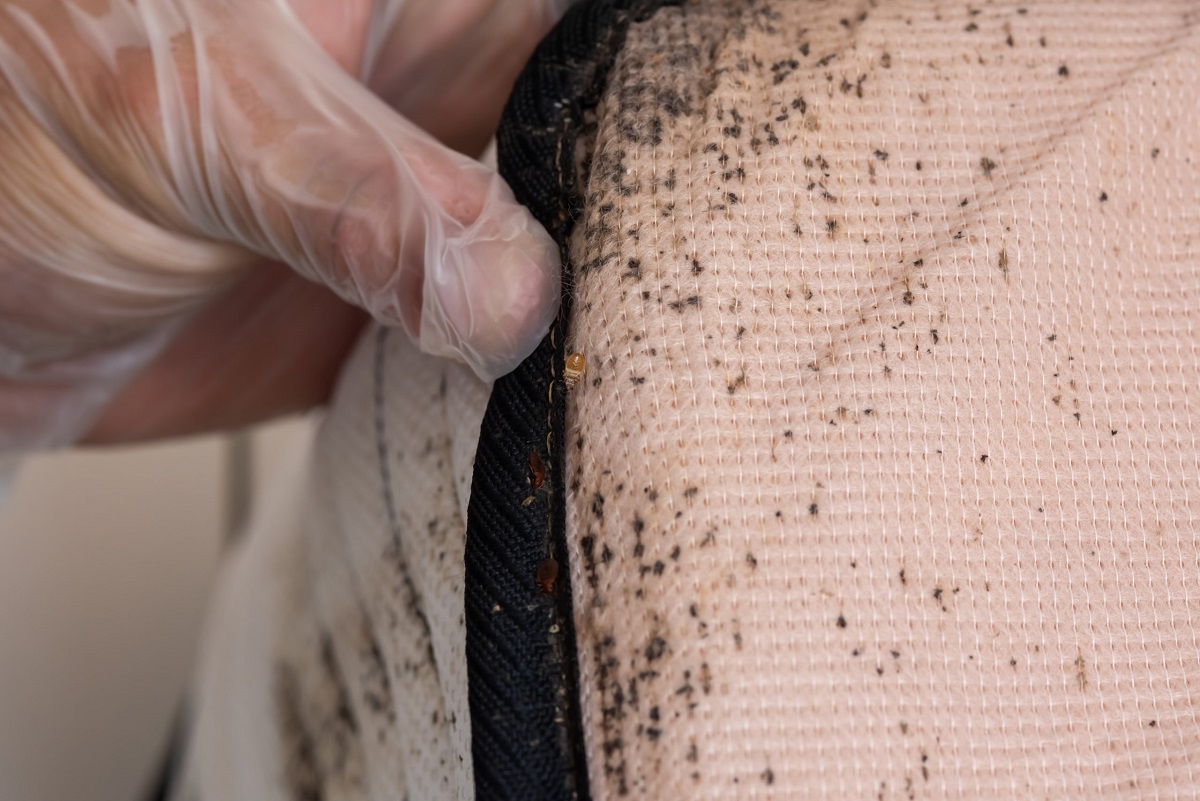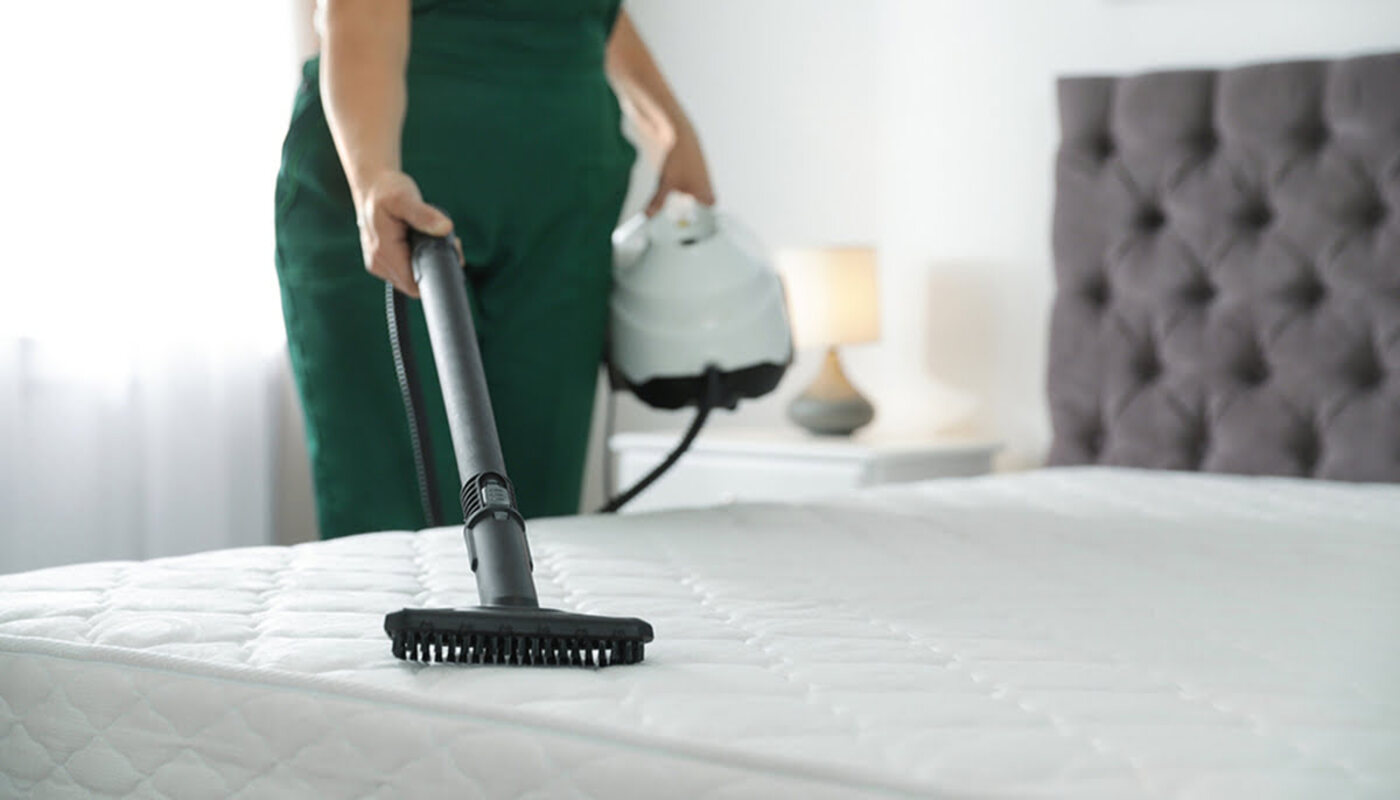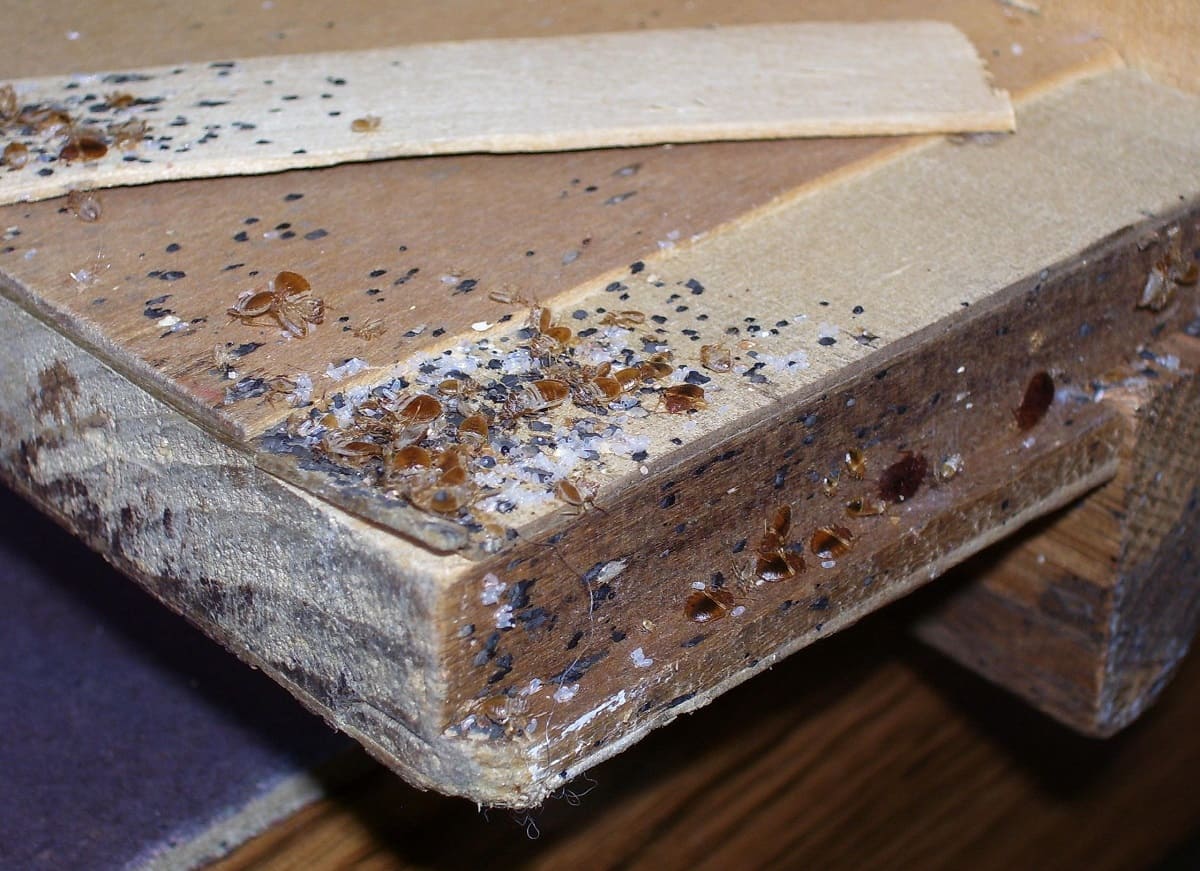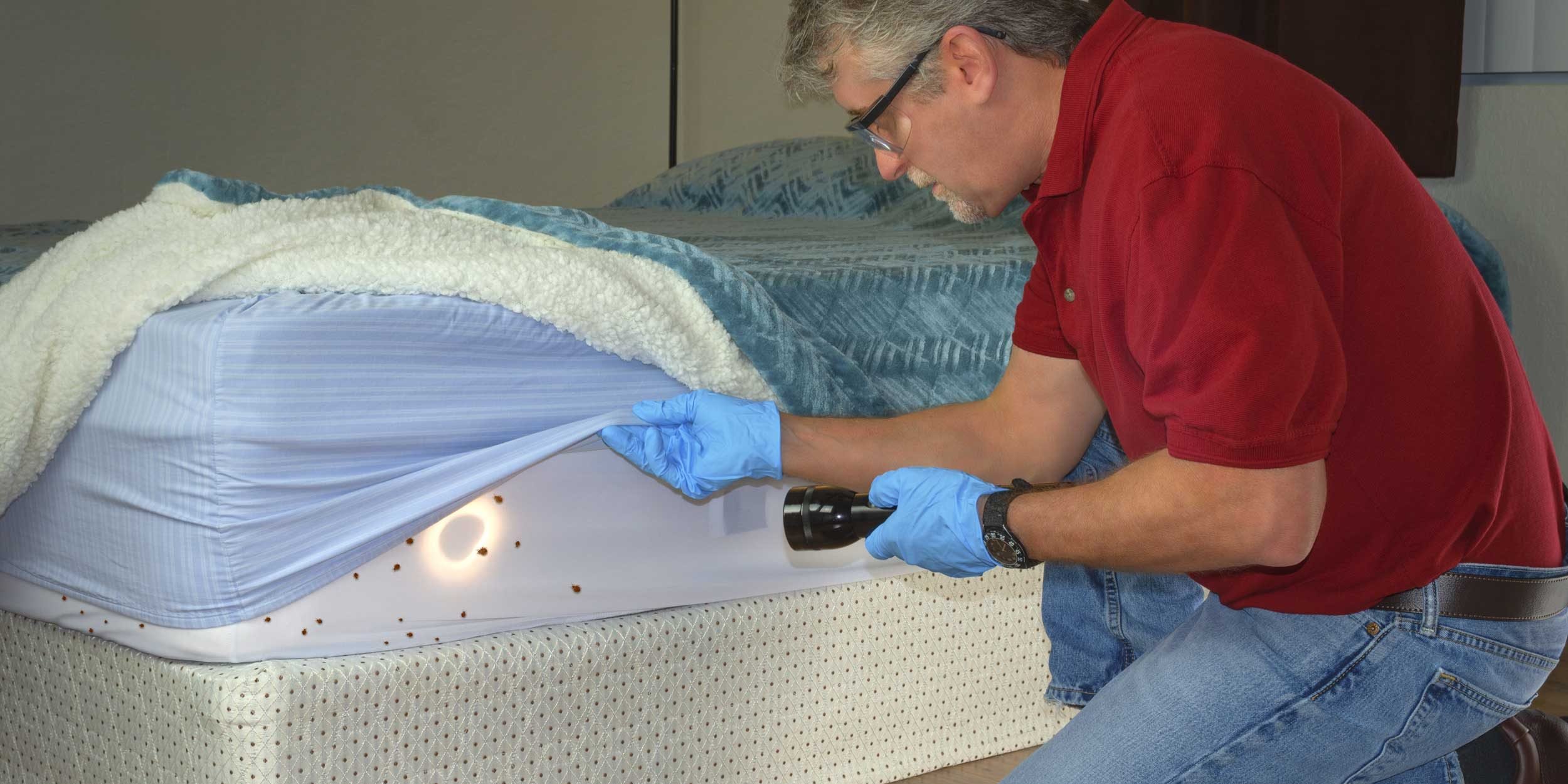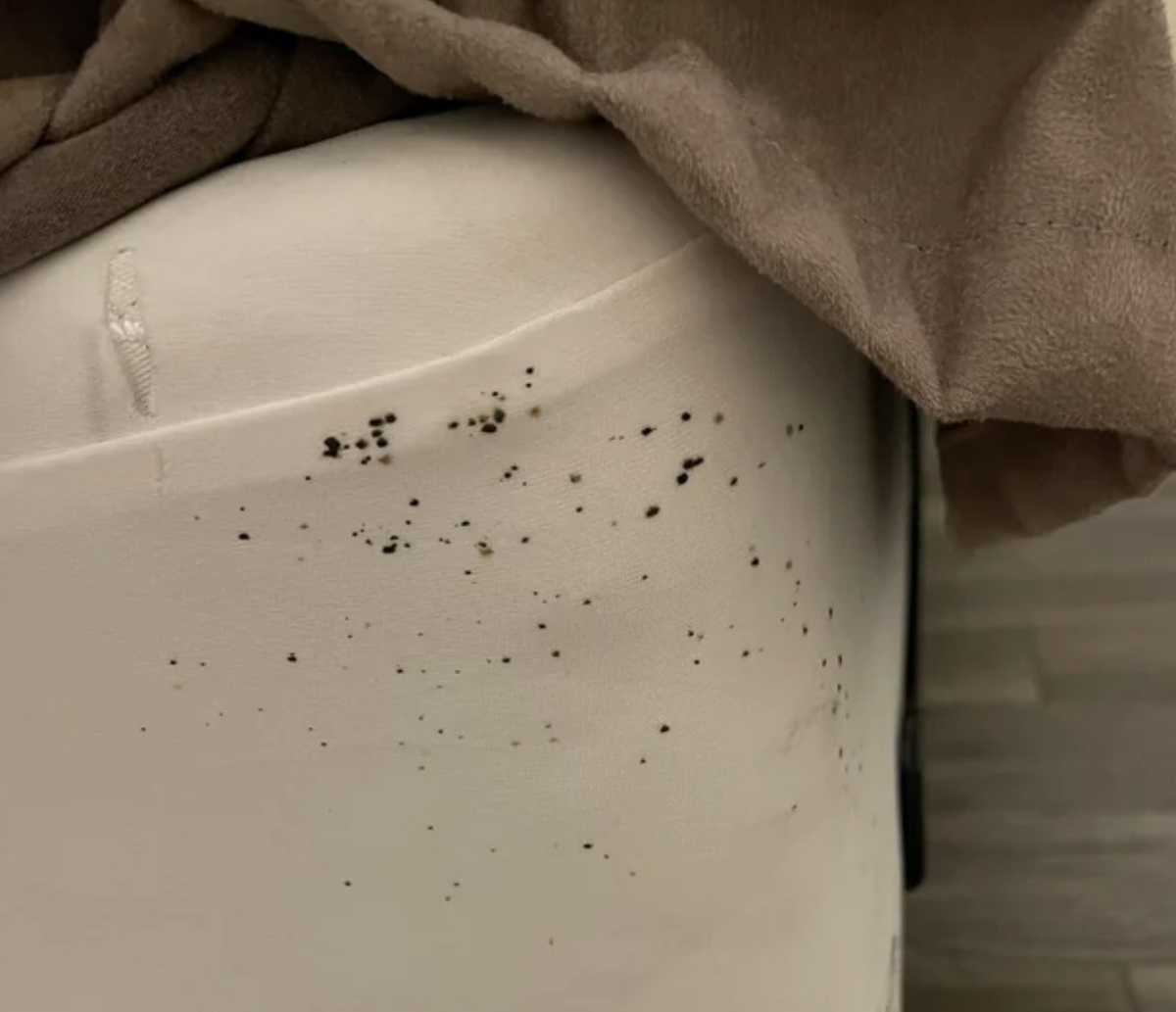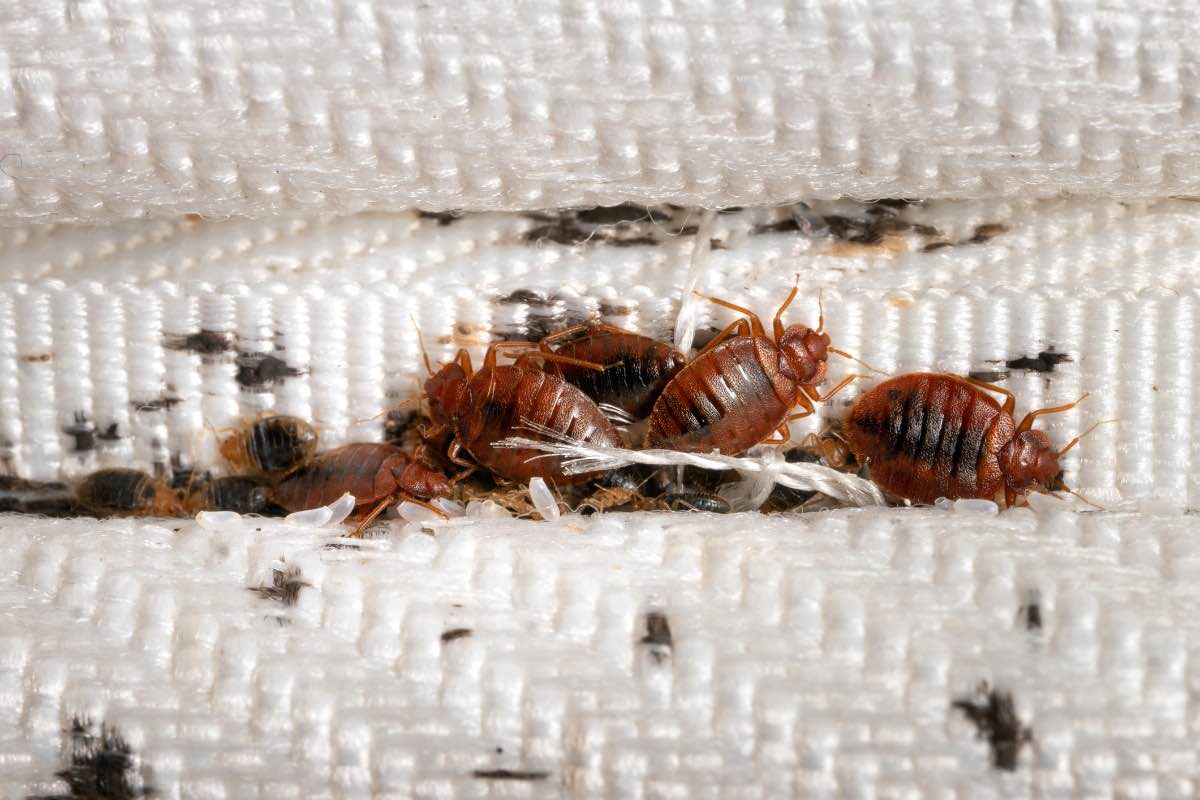Home>Furniture>Bedroom Furniture>Where Do Bed Bugs Hide On Your Body
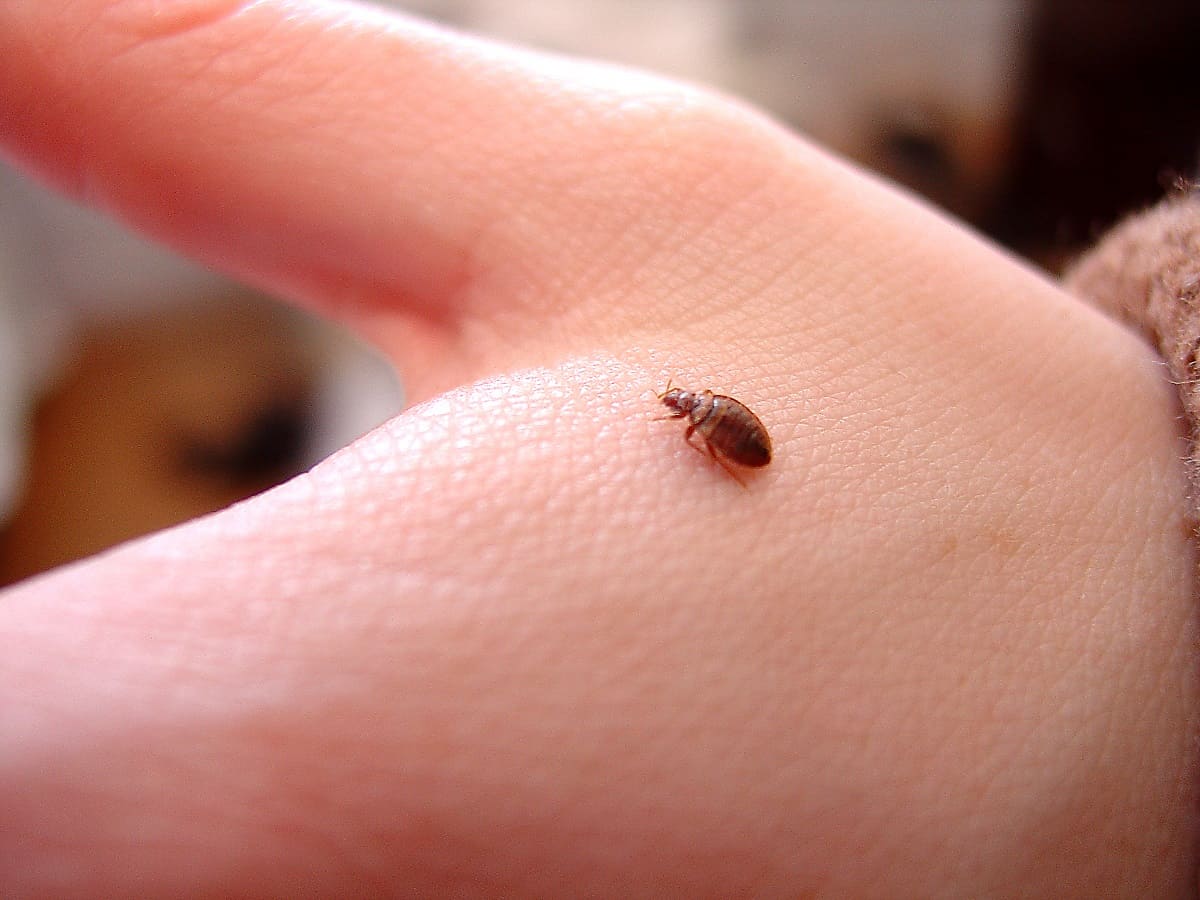

Bedroom Furniture
Where Do Bed Bugs Hide On Your Body
Modified: October 28, 2024
Discover where bed bugs hide on your body and how to prevent infestations with the right bedroom furniture choices. Keep your sleep environment bug-free.
(Many of the links in this article redirect to a specific reviewed product. Your purchase of these products through affiliate links helps to generate commission for Storables.com, at no extra cost. Learn more)
Introduction
Welcome to the world of bedroom furniture! The bedroom is a sanctuary, a place where we can relax and rejuvenate. And one essential component of creating a comfortable and cozy bedroom is having the right furniture. From the perfect bed to a stylish wardrobe, each piece plays a crucial role in transforming a simple room into a dreamy space.
When it comes to bedroom furniture, there are endless options available in the market. From traditional to modern, minimalist to luxurious, the choices are vast. Whether you prefer a rustic wooden bed frame or a sleek, contemporary dresser, your bedroom furniture can reflect your personal style and create the ambiance you desire.
In this comprehensive guide, we will delve into the world of bedroom furniture, exploring different types of furniture pieces, their functionalities, and the latest trends in the industry. Whether you are designing a brand new bedroom or simply looking to upgrade your existing furniture, this guide will help you make informed decisions and create the bedroom of your dreams.
We will start by exploring the fundamental pieces of bedroom furniture, such as beds, nightstands, dressers, and armoires. We will discuss the various types, sizes, and materials available, as well as their pros and cons. From platform beds with storage options to stylish mirrored dressers, you will discover a plethora of options to suit your needs and preferences.
Next, we will dive into the world of bedroom decor and accessories. From bedding sets to curtains, rugs to wall art, these elements add the finishing touches to your bedroom and tie the entire design together. We will explore different styles, color palettes, and materials, helping you create a cohesive and visually stunning bedroom space.
In addition to aesthetics, we will also address the functionality and practicality of bedroom furniture. We will discuss the importance of ergonomic design, storage solutions, and the utilization of space. Whether you have a small apartment or a spacious master suite, we will provide tips and tricks to maximize your bedroom’s potential.
Furniture shopping can be overwhelming, especially with the abundance of choices. That’s why we will guide you through the process of selecting the right pieces for your bedroom. We will discuss factors such as budget, durability, and eco-friendliness, helping you make informed decisions and invest in furniture that will stand the test of time.
Finally, we will explore the latest trends in bedroom furniture, from sustainable materials to multifunctional designs. We will showcase innovative pieces that combine style and functionality, making your bedroom not only beautiful but also practical.
So, whether you are a minimalist looking for clean lines and simplicity or a maximalist craving bold colors and intricate designs, this guide will help you navigate the world of bedroom furniture and create a space that truly reflects your personality and lifestyle.
Let’s embark on this exciting journey together and transform your bedroom into a haven of comfort, style, and functionality.
Key Takeaways:
- Understanding the physical characteristics, feeding habits, and life cycle of bed bugs is crucial in identifying and effectively dealing with infestations, ensuring a bed bug-free environment in your home.
- Being aware of common hiding places on your body, signs of bed bug bites, and taking preventive measures can help you identify, address, and alleviate the discomfort of potential bed bug infestations.
Read more: Where Do Bed Bugs Live
Understanding Bed Bugs
Bed bugs are small, wingless insects that belong to the Cimicidae family. Despite their name, they can be found in various areas of the home, including mattresses, furniture, and even cracks and crevices in the walls. Understanding the physical characteristics, feeding habits, and life cycle of bed bugs is essential in identifying and dealing with infestations.
Physical Characteristics
Bed bugs are typically reddish-brown in color, and their bodies are flat and oval-shaped. Due to their flat bodies, they can easily squeeze into small cracks and crevices, making it difficult to spot them. Adult bed bugs are about the size of an apple seed, while younger nymphs can be as small as a pinhead.
One of the identifying features of bed bugs is their segmented antennae, which have four parts. They also have six legs and are able to move quickly across different surfaces, including walls and floors. Additionally, bed bugs have a beak-like structure that they use to pierce the skin and feed on blood.
Feeding Habits
Bed bugs are nocturnal creatures, preferring to come out at night to feed. They are attracted to the carbon dioxide and body heat emitted by humans, which is how they locate their hosts. Bed bugs feed on blood and require a blood meal to molt and reproduce.
When feeding, bed bugs will insert their mouthparts into the skin and inject saliva that contains anticoagulants to ensure a steady flow of blood. Their bites are usually painless, which allows them to feed unnoticed for extended periods. However, some individuals may develop allergic reactions to the bed bug bites and experience itching and redness.
Reproduction and Life Cycle
Bed bugs have a rapid reproductive cycle, with females laying hundreds of eggs in their lifetime. After feeding, female bed bugs can lay up to five eggs per day. These eggs are tiny, about the size of a pinhead, and are often laid in cracks and crevices near their hiding places.
The eggs hatch into nymphs within one to two weeks, depending on temperature and other environmental factors. Nymphs resemble adult bed bugs but are smaller and lighter in color. They will go through several molts before reaching adulthood, feeding on blood at each stage.
The entire life cycle of a bed bug, from egg to adult, can range from four to six weeks, depending on conditions. Once they reach adulthood, bed bugs can live for several months or even over a year without feeding. This resilience and ability to survive in various conditions make them challenging to eradicate.
Understanding the physical characteristics, feeding habits, and life cycle of bed bugs is crucial in identifying and effectively dealing with infestations. By knowing what to look for, you can take the necessary steps to eliminate these pests and create a bed bug-free environment in your home.
Read more: Where Do Bed Bugs Come From
Common Hiding Places on Your Body
Bed bugs are notorious for their ability to hide in various cracks and crevices, including furniture, mattresses, and even clothing. However, they can also take refuge on your body, particularly when they are in search of a blood meal. Understanding the common hiding places on your body can help you identify and address a potential bed bug infestation.
Scalp and Hair
Although bed bugs are not typically attracted to hairy areas, they may seek refuge in your scalp and hair if there is no other suitable hiding spot. They can easily move from the bed to your head while you sleep, seeking warmth and optimal conditions for feeding. Therefore, it’s important to thoroughly check your scalp and run a comb through your hair if you suspect a bed bug problem.
Ears and Earlobes
Bed bugs can take refuge in the crevices of your ears or behind earlobes, where they can bite and feed on blood. The warmth and proximity to blood vessels make these areas attractive to bed bugs. If you notice itchiness or redness in and around your ears, it’s crucial to inspect for any signs of bed bugs.
Face and Neck
The face and neck are common areas for bed bug bites, as these pests are attracted to the carbon dioxide and body heat emitted from these regions. They may hide in the seams of your pillowcase or in the folds of your bedding and come out to feed during the night. If you wake up with unexplained red, itchy welts on your face or neck, it may be a sign of bed bug activity.
Read more: How Do You Draw Bed Bugs Out Of Hiding?
Arms and Hands
Bed bugs can easily hide in the folds of your clothing, especially in areas such as shirt cuffs or the inside of jacket sleeves. The arms and hands are also readily accessible to bed bugs when you are asleep, as they can crawl under your sleeves or between your fingers to feed. Be sure to thoroughly inspect your clothing and hands if you suspect a bed bug infestation.
Torso and Abdomen
While bed bugs tend to prefer exposed areas of the body, such as the arms and legs, they can also find their way under clothing to feed on the torso and abdomen. The warmth and proximity to blood vessels make these areas appealing to bed bugs. Check under your clothing, including the waistband of your pants and the edges of your underwear, for any signs of bed bug activity.
Back and Spine
Bed bugs can hide in the seams of your mattress or in the cracks of your headboard, making your back and spine susceptible to bites. They may crawl up from your mattress while you sleep and bite the exposed skin on your back. If you experience itching or notice redness, particularly in a line or cluster formation, it’s essential to inspect your bedding and mattress for signs of bed bugs.
Legs and Feet
As bed bugs tend to be most active during the night, your legs and feet are prime targets for bites. They can hide in the folds of your bed sheets, blankets, or even your socks and crawl up to feed on these areas. If you wake up with itchy, red bites on your legs and feet in the morning, it is indicative of possible bed bug activity.
Read more: What Does Thyme Do For Your Body
Groin and Genital Area
Bed bugs are attracted to areas of the body with increased heat and moisture, making the groin and genital area potential hiding places. They can easily hide in the seams of your underwear and come out to feed during the night. If you experience itching, redness, or bites in this area, it’s imperative to thoroughly inspect your underwear and bedding for signs of bed bugs.
Being aware of these common hiding places on your body can help you identify the presence of bed bugs and take appropriate measures to address the infestation. Regularly inspecting your body, clothing, and bedding is essential in preventing and combating bed bug problems.
Signs of Bed Bug Bites
One of the most distressing consequences of a bed bug infestation is the development of bites on your body. Bed bug bites can cause discomfort, itching, and even allergic reactions in some individuals. Understanding the signs of bed bug bites can help you identify and address a potential infestation in your home.
Itchy Red Bumps or Welts
One of the most common signs of bed bug bites is the appearance of itchy, red bumps or welts on the skin. These bites often resemble mosquito bites but can vary in size and shape. They may be raised or flat, depending on your body’s reaction to the bed bug’s saliva. Bed bug bites tend to be clustered together in a localized area.
It’s important to note that bed bug bites do not always cause an immediate reaction. In some cases, it may take hours or even days for the bites to become noticeable. However, for individuals who are particularly sensitive to bed bug bites, the itching and discomfort can be immediate and severe.
Clusters or Lines of Bites
Another characteristic sign of bed bug bites is their pattern on the skin. Bed bugs often bite in clusters or lines, following the path of blood vessels under the skin. This pattern may appear as a series of bites in a straight line or a zigzag pattern. The bites may be close together or spread apart, depending on the severity of the infestation and the number of feeding bugs.
Additionally, bed bug bites tend to be localized in areas of exposed skin during sleep. Common areas include the arms, legs, neck, and face. However, it’s important to note that bed bugs can bite any part of the body, including covered areas if they have access to them.
Read more: How Do I Get Bed Bugs
Allergic Reactions
While most people experience mild itching and discomfort from bed bug bites, some individuals may have allergic reactions. These reactions can vary in severity and may include intense itching, swelling, and even the development of hives. If you have a known allergy to insect bites or have experienced severe reactions in the past, it’s important to seek medical attention if you suspect bed bug bites.
In rare cases, bed bug bites can also trigger systemic allergic reactions, which may include difficulty breathing, dizziness, and a rapid heartbeat. If you experience these symptoms after being bitten by bed bugs, seek emergency medical care immediately.
Secondary Infections
Scratching bed bug bites excessively can break the skin and introduce bacteria, leading to secondary infections. It’s crucial to avoid scratching the bites to prevent infections. If you notice any signs of infection, such as increased redness, swelling, pus, or warmth around the bite site, it’s vital to seek medical attention promptly.
It’s important to note that not all individuals react to bed bug bites in the same way. Some people may not develop any visible signs or experience minimal discomfort, while others may have severe reactions. Additionally, some individuals may be more attractive to bed bugs and experience more frequent bites.
If you suspect bed bug bites or an infestation in your home, it’s essential to thoroughly inspect your bedding, furniture, and other hiding spots. Taking prompt action to address the infestation is crucial in preventing further bites and eliminating the bed bug problem.
Prevention and Treatment
Dealing with bed bugs can be a frustrating and challenging process. However, there are preventive measures you can take to keep bed bugs away, as well as steps to identify and eliminate infestations. Additionally, if you do end up with bed bug bites, there are treatments available to alleviate the symptoms. In severe cases, seeking professional help may be necessary.
Keeping Bed Bugs Away
Preventing a bed bug infestation starts with being vigilant and proactive. Here are some tips to keep bed bugs away:
- Inspect secondhand furniture, mattresses, and clothing before bringing them into your home.
- Encase mattresses and box springs with bed bug-proof covers.
- Regularly vacuum your home, paying close attention to cracks and crevices where bed bugs may hide.
- Avoid clutter, as this provides ideal hiding spots for bed bugs.
- Be cautious when traveling. Check hotel rooms for signs of bed bugs and keep your luggage away from the bed and furniture.
- Seal cracks and crevices in walls, baseboards, and furniture to prevent bed bugs from hiding.
- Use bed bug interceptors on the legs of your bed to catch and monitor any bed bug activity.
Read more: How Fast Do Bed Bugs Spread
Identifying and Eliminating Infestations
If you suspect a bed bug infestation in your home, it’s important to take swift action to prevent the infestation from spreading. Here are some steps to identify and eliminate bed bugs:
- Inspect your bedding, furniture, and other potential hiding spots for signs of bed bugs, including live bugs, molted skins, and dark fecal spots.
- Wash and dry bedding, clothing, and other washable items on high heat to kill any bed bugs present.
- Use a vacuum to remove bed bugs and their eggs from infested areas.
- Steam clean mattresses, furniture, and carpets to kill bed bugs and their eggs.
- Utilize bed bug sprays and powders that are specifically designed for eliminating bed bugs.
- Seal infested items in plastic bags and dispose of them properly.
- Consider hiring a professional pest control service to assist with the eradication of bed bugs.
Treating Bed Bug Bites
If you do get bitten by bed bugs, there are ways to alleviate the symptoms and promote healing:
- Clean the affected area with mild soap and water to prevent infection.
- Apply over-the-counter hydrocortisone cream or antihistamine creams to reduce itching and inflammation.
- Take oral antihistamines to help alleviate itching and discomfort.
- Avoid scratching the bites to minimize the risk of secondary infections.
- Apply cold compresses or take cool baths to soothe the affected skin.
- Consult with your healthcare provider for additional recommendations if the bites are severe or persistent.
Seeking Professional Help
In severe or persistent cases of bed bug infestations, it may be necessary to seek professional help. Professional pest control services have the expertise and tools to effectively eliminate bed bugs and ensure that the infestation does not return. They can perform thorough inspections, use specialized treatments, and provide guidance on how to prevent future infestations.
Remember, dealing with a bed bug infestation requires patience and persistence. By taking preventive measures, identifying and eliminating infestations, treating bites, and seeking professional help when needed, you can successfully navigate through this challenging situation and restore peace to your home.
Conclusion
Bedroom furniture plays a vital role in creating a comfortable and aesthetically pleasing space where you can relax and unwind. Understanding different types of furniture, their functionalities, and the latest trends in the industry allows you to make informed decisions that enhance your bedroom’s ambiance and functionality.
By choosing the right furniture pieces, you can create a cohesive and stylish bedroom that reflects your personal taste and preferences. From the perfect bed frame that offers both comfort and support to the functional storage solutions provided by dressers and armoires, each furniture item contributes to the overall design and functionality of your space.
In addition to selecting the right furniture, paying attention to bedroom decor and accessories is essential for creating a complete and harmonious look. Bedding sets, curtains, rugs, and wall art can transform a plain bedroom into a stylish and inviting space. Experimenting with different colors, textures, and materials allows you to infuse your own personality and create a unique atmosphere.
While designing and furnishing your dream bedroom, it’s important to consider practicality and functionality. Ergonomic design, efficient storage solutions, and effective space utilization are key factors in creating a bedroom that is both comfortable and practical. Regardless of the size of your bedroom, there are always creative ways to optimize the available space.
To ensure long-lasting quality and durability, it’s essential to choose furniture made from high-quality materials. From solid wood to eco-friendly options, there are various choices available that align with your values and preferences. Investing in well-crafted furniture ensures that your bedroom remains a haven of comfort for years to come.
Preventing and addressing bed bug infestations is also an important consideration when it comes to bedroom comfort and hygiene. Being aware of bed bug hiding places, signs of bites, and taking preventive measures can help you maintain a bed bug-free environment. If infestations do occur, it’s crucial to promptly identify and eliminate them, as well as treat any bites to alleviate discomfort.
In the end, creating the perfect bedroom requires careful thought and consideration. By understanding different furniture options, exploring design ideas, and being proactive in maintaining a clean and comfortable space, you can transform your bedroom into a sanctuary that promotes relaxation and rejuvenation. Remember, your bedroom is a reflection of your personal style and should be designed and furnished with your unique preferences in mind.
So, let your creativity and imagination run wild as you embark on the journey of designing the bedroom of your dreams. Make thoughtful choices, prioritize comfort and functionality, and enjoy the process of transforming your bedroom into a space where you can truly feel at home.
Now that you're more aware of where bed bugs might be lurking on your body and the signs to watch for, you might wonder what steps to take if these pesky critters invade your space. Our next piece offers practical advice on handling a bed bug situation effectively. On another note, if pantry moths are your concern, don't miss expert insights on managing pantry moths through effective control strategies. Both articles provide essential tips and solutions for maintaining a pest-free home.
Frequently Asked Questions about Where Do Bed Bugs Hide On Your Body
Was this page helpful?
At Storables.com, we guarantee accurate and reliable information. Our content, validated by Expert Board Contributors, is crafted following stringent Editorial Policies. We're committed to providing you with well-researched, expert-backed insights for all your informational needs.
